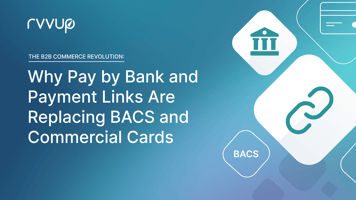Why Day Sales Outstanding (DSO) is a Challenge – And How Automation Solves It
Late Payments: A Challenge, Not a Crisis
Getting paid on time should be simple. Yet, the Atradius Payment Practices Barometer and UK government insolvency data reveal a very different reality. According to Atradius, nearly 50% of UK B2B invoices are paid late, with some industries facing delays of over 90 days—three months of waiting for revenue that should already be in your account. (Read the full report)
Meanwhile, UK government insolvency statistics show that one in 191 companies went under in 2024—a stark reminder that late payments can ultimately lead to insolvency. (View the latest insolvency report)
Late payments aren’t just a nuisance; they signal deeper inefficiencies in financial operations. Too many businesses still rely on manual invoicing, traditional bank transfers, and slow reconciliation methods, adding unnecessary complexity and delays. The good news is that with the right tools, you can regain control over your cash flow and significantly reduce your DSO.
The Cost of Sticking with the Status Quo
It’s surprising how many businesses still manually process invoices and payments despite faster, more efficient alternatives. The longer it takes to collect payments, the greater the cash flow strain—and the more time finance teams are forced to spend chasing overdue invoices instead of focusing on growth.
Take a mid-sized B2B supplier still relying on spreadsheets and manual invoicing. Their finance team spends hours tracking payments, reconciling accounts, and following up on overdue invoices. Even when payments do arrive, bank processing delays and transaction fees further erode margins.
Contrast that with businesses that automate their accounts receivable (AR) processes. Many see DSO drop by 30-50%, unlocking faster cash flow and freeing up teams to focus on higher-value work. Importantly, automation doesn’t have to be an overnight transformation—many companies start with small, incremental changes that gradually build into a fully streamlined process.
Industry Experts on the Future of Payments
Forward thinking businesses are already embracing automation—not just for convenience, but to stay ahead of the competition.
According to Gartner, businesses that integrate Robotic Process Automation (RPA), Business Process Automation (BPA), and AI-driven payment solutions gain better financial efficiency and resilience. (Read Gartner’s insights)
Similarly, Forrester predicts that AI-powered accounts receivable solutions will be instrumental in reducing DSO and improving cash flow visibility. Automating AR doesn’t just accelerate payments—it enhances customer payment behaviour, streamlines collections, and reduces reconciliation delays. (Explore Forrester’s latest report)
How Businesses Are Adapting
The businesses making the biggest strides in reducing DSO aren’t working harder—they’re working smarter. Here are the key trends driving transformation:
✅ Automation is streamlining reconciliation – freeing up finance teams to focus on high value tasks instead of monotonously chasing payments.
✅ AI is making collections proactive – helping businesses flag potential late payers before invoices even go overdue.
✅ Instant settlement is on the rise – more businesses are adopting Pay by Bank and Open Banking to reduce the time it takes for funds to arrive in their bank account.
✅ Flexible payment options are improving cash flow – making it easier for customers to pay increases on-time payments.
The Shift Towards Smarter Financial Processes
Modernising accounts receivable isn’t a luxury anymore—it’s a necessity. Here’s how businesses are benefiting:
📌 An automotive parts distributor, WORLDPAC, automated its invoicing and payments, reducing DSO to 27 days. Electronic payments surged by 80% in three months, and payments were made 3.5 days faster on average—saving $170,000 annually in processing fees. (Source)
📌 A commercial real estate firm implemented automated payment reminders and tracking, cutting DSO by 45% and improving cash flow predictability.
📌 Wholesale distributors still relying on manual invoicing face longer DSO cycles, tighter cash flow, and heavier admin burdens—challenges that automation can help solve.
The shift towards automation isn’t about overnight transformation—it’s about adopting a smarter, step-by-step approach to financial efficiency. Businesses that modernise their payment processes now will be better positioned for long-term success.
Looking Ahead
At Rvvup, we’re having these conversations every day. Businesses are recognising that efficiency and resilience are essential for their success. Across industries, automation is moving from a ‘nice-to-have’ to a must-have.
A recent study found that nearly 44% of midsize businesses have automated at least one or two accounts payable (AP) or accounts receivable (AR) tasks, while 15% have automated three or more—and 5% are fully automated. (Source)
The trend is clear: businesses that invest in automation are reaping the benefits. The question isn’t if companies should modernise—it’s how soon they can start seeing the results.




